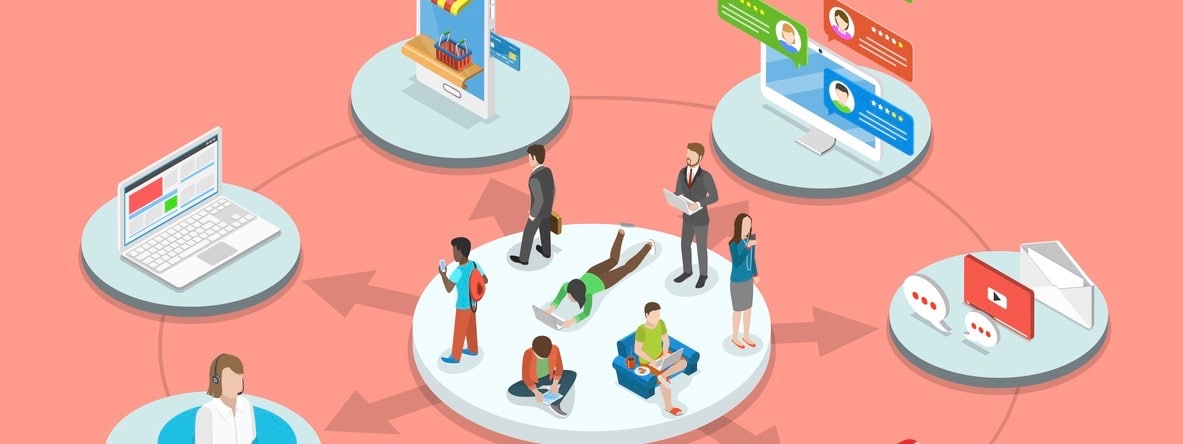Today’s customer journey is an omnichannel experience. As such, online shopping has surpassed brick-and-mortar storefront shopping in popularity, with 96 percent of Americans having made an online purchase at some point and 51 percent saying they prefer buying online versus in-store, according to a recent survey by BigCommerce and Square.
Digital shopping is even more popular among millennials, with 2 in 3 saying they prefer to shop online. However, consumers still open their wallets more so in actual storefronts, as e-commerce accounts for only 7.5 percent of all retail sales.
This means businesses wanting to experience both short- and long-term success need to be able to reach customers wherever they shop, whether it’s online or in the store. Here are three ways businesses are implementing an omnichannel approach to marketing in order to reach customers everywhere.
Using the cloud to harmonize digital and traditional channels
One way companies are adapting to today’s omnichannel consumer is using cloud contact center technology to integrate digital and traditional support channels. These types of consumers may seek support through a wide range of channels, including live chat, chatbots, web portals, social media, IVR (Interactive Voice Response), text, email and in-store visits.
In many cases, a discussion may begin on one channel and wind up on another. For instance, a customer may reach out over live chat, migrate to the phone to discuss details with a representative and follow up via email. During this process, the customer may have to repeat the same information to multiple representatives, which wastes their time and leads to increased dissatisfaction.
But adopting a cloud contact center platform can solve this issue by providing companies with a single interface to manage all support channels, allowing live reps to view a customer’s entire support history no matter where it originated and providing a seamless transition from one channel to another. It also empowers companies to proactively apply information gathered from multiple channels in order to deliver better customer service.
For instance, IVR can preserve information from customers’ prior history, so that when they call your business at some point in the future, this technology can predict their intent and provide personalized and relevant menu options. Today’s most advanced IVR can even proactively reach out to customers in anticipation of their needs, like texting them automated appointment or bill reminders.
Integrating automated and live support
Using a cloud contact center for omnichannel integration also makes it easier for companies to offer a balanced combination of automated and live support options. Still, given an option, most customers would prefer to resolve issues through automated self-service tools.
Cloud contact center technology makes self-service readily available by allowing companies to integrate automated and live support options. Cloud platforms provide support for automated self-service channels such as chatbots and IVR, which can handle routine inquiries efficiently. These tools can also rapidly identify tickets that require assistance by live reps and automatically route them to those who are available.
Combining online and in-store marketing
Businesses are also using omnichannel methods to bridge the gap between online and in-store marketing. But, thanks to smartphones, the line between these two marketing schemes has virtually become blurred.
Nearly 70 percent of consumers research products online before visiting a storefront to buy something, while almost half use their smartphones in a store to compare competitors prices, a Harris poll shows. Retailers are responding to this by using tools such as competitor price tracking software, which enables businesses to match the price of online competitors.
Another way companies are bringing digital and brick-and-mortar marketing together is through beacon marketing, which allows businesses to send offers to in-store customers who have downloaded the company’s smartphone app.
The new norm
Shopping done via an omnichannel experience is the new norm for consumers, prompting marketers to develop new tactics for reaching today’s multimedia-savvy consumer. Cloud contact center platforms enable companies to manage support for all service channels, while providing smooth integration of automated and live support.
Additionally, competitor price tracking and beacon marketing are helping companies bridge the gap between online and in-store marketing. Together, this array of strategies is enabling businesses to reach customers from all channels, maximizing their marketing outreach and sales revenue.









